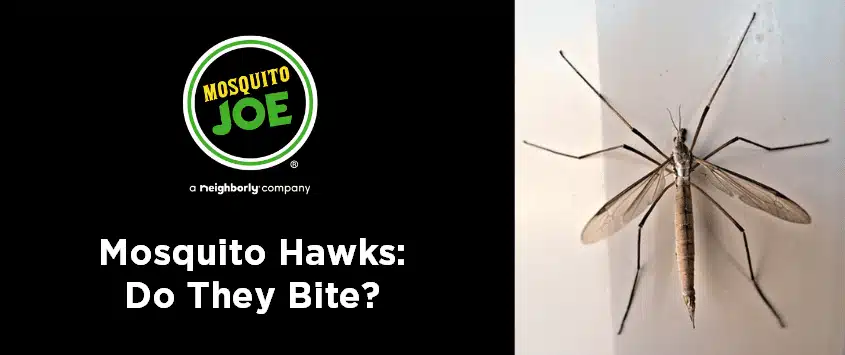Over the years we have discovered that the mosquito hawk gets a lot of blame it doesn’t deserve. We have been called back to customers’ homes because they have “giant mosquitoes we failed to kill” only to discover they have mosquito hawks hatching. We thought it was time to clear the air.
There are over 14,000 species of mosquito hawks and likely more have not yet been discovered. They live all over the globe, but we will try and limit our information here to those that we live with here in the Houston area.
The correct name for a mosquito hawk is a Crane Fly, although we have heard them referred to as “Daddy Long Legs”, “Skeeter Eater” and “Giant Mosquito”. Crane flies do not bite – they have no mouth parts with which to do so. They only live about 10 days, spending that time focused primarily on mating. If they do “eat” it is limited to drinking nectar or dew. They also don’t eat mosquitoes despite what you may have heard.
The life cycle of a Crane Fly is typically a year. Eggs are laid in later summer, usually in wet soil or algae, or for some species, in water. The larvae then hatch from these eggs and are grub-like in their appearance. A Crane fly will spend months in its larval form (some species up to 5 years!). They busy themselves breaking down decaying material in your yard and can be very beneficial to your soil as a result.
The European and Marsh Crane flies are considered an invasive species in the USA. They will feed off, and often destroy, crops. Others will feed off rotting wood and can cause damage to homes as they do so. But the majority will spend their time in the soil aerating it for you and participating in the food chain. In mid to late spring the larvae pupate into tough, brown carcasses often referred to as “leather jackets”. They are found just below the soil’s surface.
Crane fly pupae can cause damage to turf grass and can often cause brown spots, particularly seen on golf courses. Keeping your lawn manicured and dry will help prevent an abundance of these insects, thereby reducing your potential for this.
The pupae will emerge as fully-grown Crane flies in late summer or fall. You may see large numbers of them at times as the males swarm in search of females with which to breed. During this short time, they won’t eat, perhaps using their sucking mouth parts to drink if given the opportunity, or to feed on nectar. Most females lay their eggs within 24 hours of hatching, laying them once again in wet soil, algae, or water.
Crane flies are completely harmless to humans, neither biting nor carrying disease. They can provide important sustenance to the birds and beetles in your yard. Some species are attracted to light, and you will often see them kicking around your windows at night, or around your outside lights.
In short, these insects provide valuable benefits both as a food source for birds and other insects and to your soil. They have nothing to do with mosquitoes. On the other hand, if mosquitoes are your issue, we have a lot of blog posts that can give you more information about them. Of course, we can also get rid of them for you. Just give us a call and we can get you a free quote, no strings.
Searching through dozens of home and commercial service providers is a thing of the past. Rely on Neighborly’s national network of trusted, local service professionals for all your home and commercial service needs.





 App Store
App Store
 Google Play Store
Google Play Store